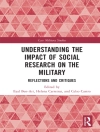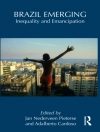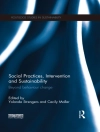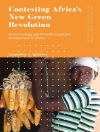Analytical Archaeometry describes this interesting and challenging field of research – on the border between natural sciences (chemistry, spectroscopy, biology, geology) and humanities (archaeology, (art-)history, conservation sciences). It fills the gap between these two areas whilst focussing on the analytical aspects of this research field. The first part of the book studies the main analytical techniques used in this research field. The second part expands from the different types of materials usually encountered, and the final part is organised around a series of typical research questions. The book is not only focussed on archaeological materials, but is also accessible to a broader lay audience. Overall the book is clearly structured and gives insight into different approaches to the study of analytical providing extensive discussion on a wide range of techniques, materials, questions and applications. Due to the advances in analytical instrumentation and applications in this field, it is important to have all this information merged together. Academics as well as professionals in archaeology, art history, museum labs and conservation science will find this an invaluable reference source ensuring the reader is provided with the latest progress in this research field.
Tabela de Conteúdo
Introduction;
Part I. ANALYTICAL METHODS: Introduction;
Methods of Visualisation;
Vibrational spectroscopy;
X-Ray methods;
Nuclear techniques;
Methods of separation;
Mass spectrometry;
Electrochemical techniques;
Part II. MATERIALS: Ceramics and enamels;
Glass;
Stone;
Gemstones/minerals;
Obsidian;
Pigments and dyes;
Icons and paintings;
Metals / corrosion;
Biomaterials;
Resins, bitumens, tar, coal;
Ivory and bones;
Wood;
Textiles;
Contemporary materials;
PART III: QUESTIONS: Identification;
Authentication;
Technology of production;
Provenancing;
Dating;
Degradation and conservation;
Dietary reconstruction;
Summary;
Index
Sobre o autor
Professor Howell GM Edwards has published over 430 research papers in Raman spectroscopy and is on the Editorial Advisory Boards of the Journal of Raman Spectroscopy, Spectrochimica Acta: Biomolecular Spectroscopy, the Internet Journal of Vibrational Spectroscopy and the Asian Journal of Spectroscopy. He has supervised 40 research students for Ph.D degrees. Currently, he has research collaborations with groups in Spain, France, Denmark, Germany, Australia, Brazil and the USA. He has lectured widely on Raman spectroscopy and its applications including Plenary and Invited Lectures in Brazil, Australia, Finland, Denmark, Spain, France, South Africa, U.S.A and Germany. Sponsors of his research work include Bruker (Germany), Stiefel Pharmaceuticals, British Nuclear Fuels plc, ICI, BP, Purolite Intl. (USA), British Antarctic Survey, Repsol (Spain), the British Council and Elf Aquitaine (France). Professor Edwards is also national committee member of the Molecular Spectroscopy Group of the Royal Society of Chemistry and also of the UK Astrobiology Panel. Peter Vandenabeele is Professor of Archaeometry at the University of Ghent, Belgium. His main research interests are the application of Raman and analytical techniques to archaeology and art materials , dyestuffs , wall paintings and ceramics.












